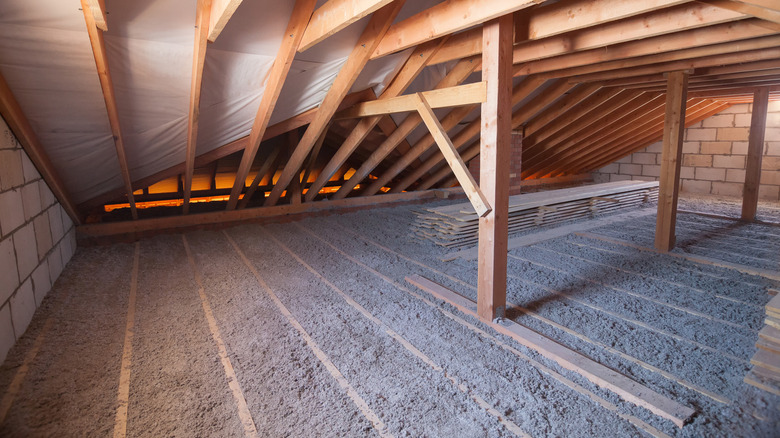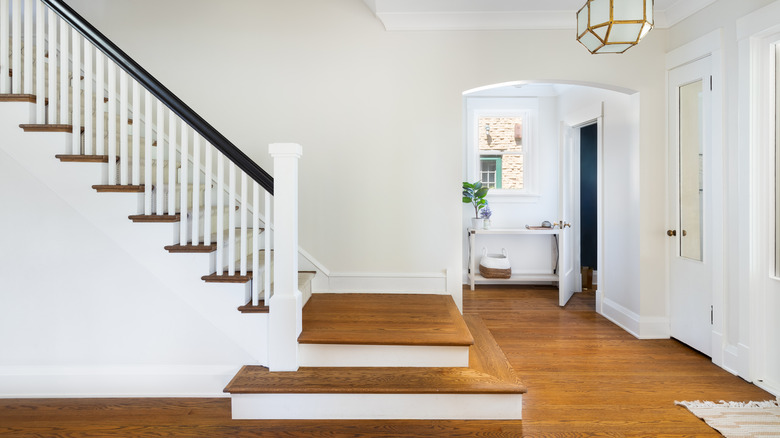3 Signs You Need To Replace Your Home's Insulation
Good home insulation can be the difference between living comfortably or having a home that is always too hot or too cold. Not only is sufficient insulation better for you, but it is also better for the environment since the energy used to heat and cool your home is more efficient when your home is properly insulated, according to Energy.gov.
Everyone knows that heat rises, but why? Heat always moves from warm to cool areas to balance the difference in temperature. As you heat your home in the winter, warm air moves to cooler spaces, and without sufficient insulation, that air moves through ceilings and walls. Likewise, during warm months, outside heat can move into your home without proper protection.
Knowing the signs that you need to replace your home's insulation is key to living in a more energy-efficient space that is comfortable and environmentally friendly. As fuel costs rise, there is no time like the present to check your home's insulation.
The insulation looks bad
The first sign that you need to replace your home's insulation is if it looks broken down, damaged, or missing altogether. This step is particularly important in older homes that may not have been well-insulated when they were built, or the insulation has since started to break down.
A+ Insulation suggests starting your inspection in the attic. Because heat rises to colder spaces in the winter, your home can lose up to 20% of your heating costs when the attic lacks sufficient insulation. They recommend at least 12 inches of insulation but suggest that 15 to 20 inches is even better.
It is more difficult to check for insulation inside your walls. Wall space between studs should be completely filled with insulation. You can call an expert to check, or you can look yourself. To do this, start by turning off the breaker to your home's electricity, then remove an outlet and look behind it to see if you can view the status of your wall insulation.
Your energy usage has increased
Many energy companies provide yearly energy usage information. If they do not provide it with your monthly statement, you can request it. If that's too much of a hassle, your monthly bill should show the amount of energy you use each month in the unit of a kilowatt-hour, shown as kWh. Note that you are comparing energy usage, not how much you paid for your overall monthly bill. Because the cost of energy fluctuates, it is important to compare the actual kWh rather than how much you spent, says Schneider Electric. Compare each month with the same month in previous years. For example, compare July 2021 to July 2020, and so on.
If you have lived in the same home for two years or more, you can look back on those previous bills to see if there is a pattern of usage increase. If so, the problem may be that your insulation is losing effectiveness, and it is time to upgrade to avoid losing even more money on your energy costs.
Your rooms are different temperatures
If you walk from one room into another room in your house that feels distinctly warmer or cooler, you may need to consider replacing your home's insulation. According to TJ's Plumbing, poor insulation is a major cause of temperature discrepancies. In homes with more than one floor, the upstairs space is likely to be warmer in the summer and colder in the winter due to a lack of sufficient attic insulation.
Other insulation-related reasons for rooms with different temperatures are that the different rooms have different amounts of insulation in the walls. Newer home additions, for example, will probably be better insulated than older parts of the home.
If you are not sure about your home's energy efficiency, you can do an energy audit. Some energy companies offer this service for free, so contact them first. There are also companies that provide this service which can take between 30 minutes and four hours to complete.



